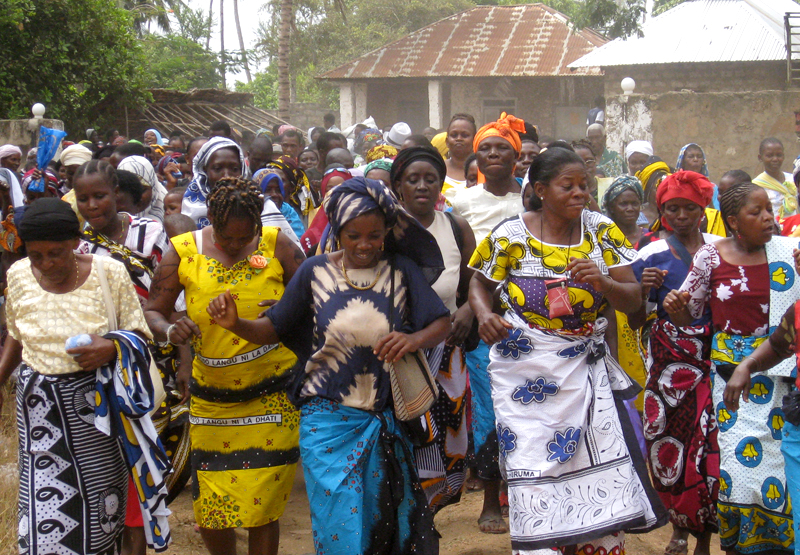In March, Kenya became one of 60 countries to have developed an action plan to support the implementation of United Nations Security Council Resolution 1325 (UNSCR 1325), on women, peace and security. Besides the principles of the 2010 Constitution, the action plan – like the resolution – focuses on four pillars, namely prevention; protection; participation and promotion; and relief and recovery.
But even as the country celebrates this milestone, the engagement of Kenyan women in the security affairs of the country remains mixed. This is particularly evident in addressing challenges surrounding radicalisation and violent extremism.
Kenya’s action plan was launched on International Women’s Day, earlier this year, under the theme ‘Kuhusisha Wanawake ni Kudumisha Amani’ (meaning ‘to involve women is to sustain peace’). The action plan is timely given the serious security threats posed by radicalisation and violent extremism, and the challenges the country faces in effectively responding to these.
Many Kenyan women have taken an active role in countering this scourge, particularly at the family and community level. The action plan acknowledges that women can play specific roles in this regard; particularly given their unique access and influence in the household and community. In addition, women also offer valuable insights and perspectives in how related policies and practices can be strengthened.
Perhaps a conspicuous oversight with the action plan, however, is its silence on women’s active agency in violent extremism – whether as sympathisers or as perpetrators – and how this should be addressed. This is at a time when the involvement of women in radicalisation and violent extremism is coming into sharp relief. A number of Kenyan women, especially younger women, have been arrested and implicated in various ways as sympathisers and enablers in some of the recent violent extremist attacks.
How, for instance, will the plan respond to the issue of radicalised females, recruits and returnees? It is questionable whether the ‘relief and recovery’ pillar of the action plan adequately tackles this concern. Another area that requires greater clarification is the need to develop gendered counter-terrorism policies and responses at the national level.
Encouragingly, women are increasingly in charge of security matters and hold more and more key decision-making positions within government. Their representation is an achievement with regard to the ‘participation and promotion’ pillar of UNSCR 1325.
This pillar is important given that the representation of women in such positions is likely to have a positive influence on the outcome of decisions taken at this level. In Kenya, female representation in such key positions should translate to more gendered and nuanced counter-terrorism responses by the government.
A case in point is Ambassador Raychelle Omamo, Cabinet Secretary for Defence. Omamo also chairs the Defence Council, which is responsible for the overall policy, control, and supervision of the Kenya Defence Forces (KDF). Currently, the KDF is engaged in Operation Linda Nchi, in pursuit of al-Shabaab militia, who are responsible for many terrorist attacks in the country.
Another example is Ambassador Monica Juma, who was until recently the principal secretary in the Ministry of Interior and Coordination of Government. The ministry is responsible for Kenya’s internal security, and for curbing threats such as radicalisation and terrorist attacks. Significantly, the Ministry of Interior and Coordination of Government – together with the Ministry of Public Service, Youth and Gender – is responsible for providing the strategic oversight and leadership in the implementation of the action plan.
Other relevant dockets led by women include the Ministry of Public Service, Youth and Gender, led by Sicily Kanini Kariuki, and the Ministry for Foreign Affairs, led by Ambassador Amina Mohamed. In contrast, however, the representation of women in other formal peace and security structures at lower levels of governance is minimal.
The participation of women in peace committees and in peace processes, is quite low, for example – particularly at the county and sub-county levels. Of concern is that the few positions that are occupied by women are mostly supportive, with few women holding leadership positions.
These peace committees play an important role in providing early warning and response to conflict and security matters, which includes providing alerts on activities around radicalisation in designated areas. The poor participation and representation of women in leadership positions in these committees can largely be attributed to capacity shortfalls in terms of skills training. These are some of the challenges that the National Action Plan should tackle.
The inclusivity of the National Action Plan is commendable. Of particular interest is a call to civil society organisations, academic and research institutions for research into the impact of conflict on Kenya’s women and their roles, practices, and involvement. This includes areas of conflict prevention, conflict resolution, peacebuilding, and security mechanisms and processes. Such research should also go a step further to look at the impact of terrorism on Kenyan women, as well as their roles and involvement in countering terrorism and violent extremism.
UNSCR 1325 is a powerful legal and policy framework, which allows for specific policy- and practice-related discussions on women’s peace and security concerns. And while UNSCR 1325 does not specifically mention terrorism, subsequent instruments such as Resolutions 2122 (2013) and 2178 (2014) note the need to increase the role of women in peace and security issues caused by terrorism.
And so it is increasingly becoming important for countries such as Kenya to take specific measures and perhaps even adopt definite plans to address the gendered nature of radicalisation and violent extremism. Exactly how the strategic objectives of the National Action Plan will evolve and adapt to promote women’s empowerment, leadership and participation in countering radicalisation, terrorism and recruitment into violent extremism, in particular, will remain to be seen.
Irene Ndungu, Researcher, Transnational Threats and International Crime Division, ISS Nairobi


